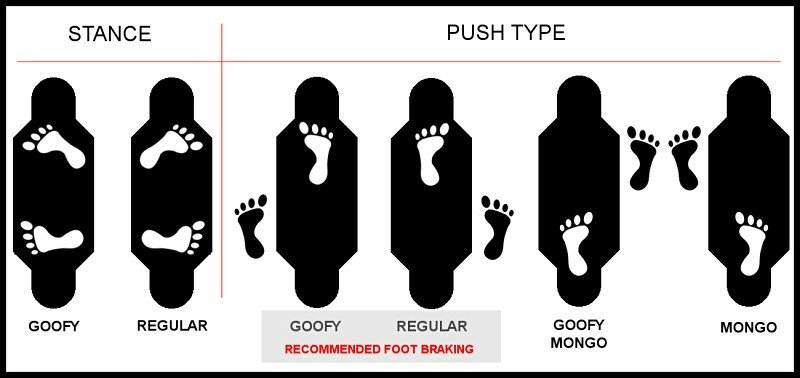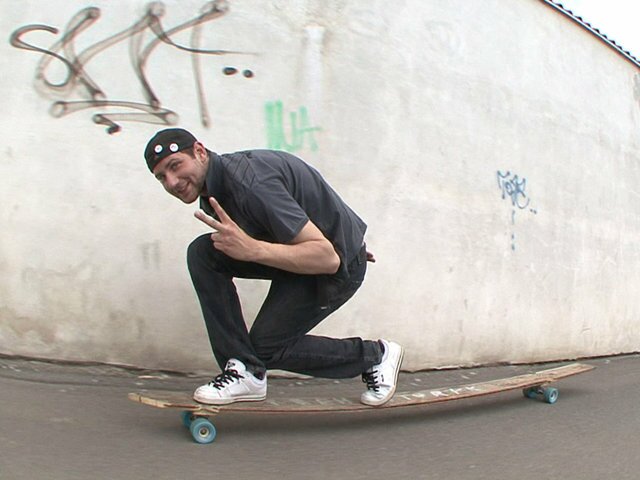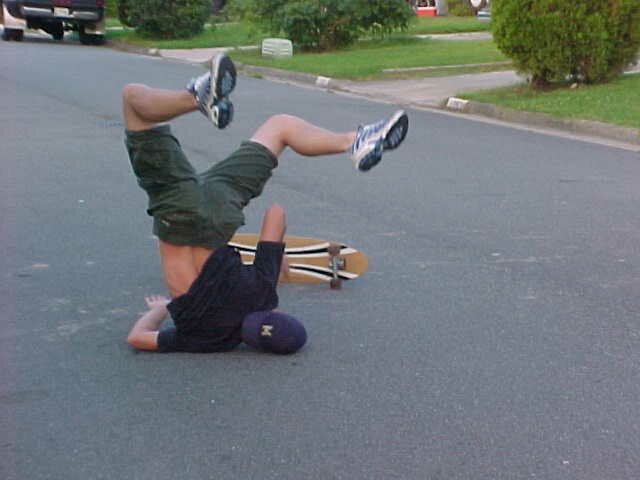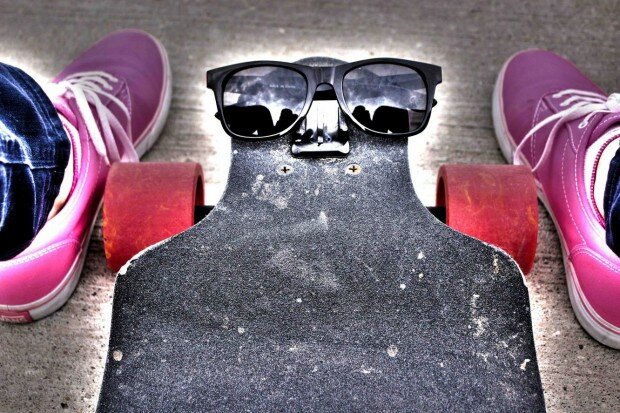I was walking in the rain to the Reitz Union bus stop the other day when I witnessed a wild-eyed, arm-flailing longboarder take a brutal spill. He had been cruising downhill, following the swerve of the sidewalk, when he noticed how crowded the area was. He haphazardly attempted to brake with his foot, but his mongo stance fucked his momentum, causing him to hydroplane briefly and then fly forward, shooting the board out behind him. He just laid there for a second, sprawled out on the pavement like some kind of sad, broken thing. After a couple seconds, he gathered himself and his remaining dignity and hobbled off to recover his rogue Sector-9, which by now had rolled a substantial distance away.
I felt really sad for him. He had hurt his body and his ego. His board was undoubtedly ruined from the rain, deck water-logged and hardware rusting.
Three years ago when I lived in a dorm, my longboard was my primary means of transportation. My empathy for this guy was flying because I have wiped out so many times on campus, often in the most dramatic and ego-shattering ways imaginable.
I came up with a few guidelines for people who are new to longboarding in the hopes of maximizing the experience and minimizing damage to the body and soul.
1. Don’t ride mongo.

“Riding mongo” means that you push with your front foot. It looks awkward and it sacrifices control and speed. You’ll never learn how to properly footbrake, unless you learn to do it like this guy.
2. Don’t ride in the rain.
Your deck will become waterlogged and heavy. Your bearings and trucks will rust. At this point, you may as well buy a new board.
3. Start big.
My first longboard was 44 inches. This is where you want to start; it’s basically like standing on a moving platform. Easy peasy and great for parking garages.
Now I have a penny board, which is 22 inches. It’s way more fun, but I fall all the time.

4. Respect the parking garage.
Choose parking garages that have more than five levels and stick to the top three. Why? Because cars. Go at night, because police. Take the turns backside until you feel comfortable, then try frontside. Don’t hesitate, though. That’s how you get hurt. Try to relax.
5. Watch the trucks.
Yes, you should watch out FOR trucks too, but what I mean here is the trucks on your board. When I first got my longboard, a friend loosened my trucks up a lot because he said I could carve easier and it would be more fun. In retrospect, I wasn’t ready for that, and I busted my ass a lot.
Don’t loosen your trucks until you feel you’re ready for it. But yes, it is definitely more fun.

You don’t want to be this guy.
6. Wear good shoes.
There are some longboards that don’t have grip tape and are designed to be ridden barefoot. Only ride barefoot once you are fully confident with your longboarding. It’s hard to be a valuable member of society with skinned feet.
7. Know the topography of the places you skate.
I’ll never forget the time I was cruising downhill on Gale Lemerand from Stadium to Museum road. I was new in town and had no idea the size of the hill. When I saw the busy intersection of Museum and Gale ahead of me, I bailed to the right, into the grass. My longboard shot out left into the road and rolled downhill, passing under two cars. I still can’t believe it didn’t get crushed. That moment was probably the closest I’ve ever gotten to finding God.

8. Don’t try to look cool.
Really, longboarding is a LOT of fun and is a great means of transportation, but it will always be the awkward, less coordinated cousin of skateboarding. Don’t be afraid of falling, because you will. And really, it’s not so bad.
If you want to look cool, buy a skateboard.
9. Have fun!
Because you deserve to. Cruise around with friends. Find your Zen.






